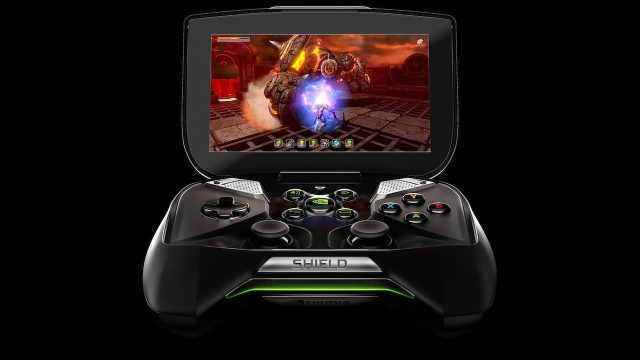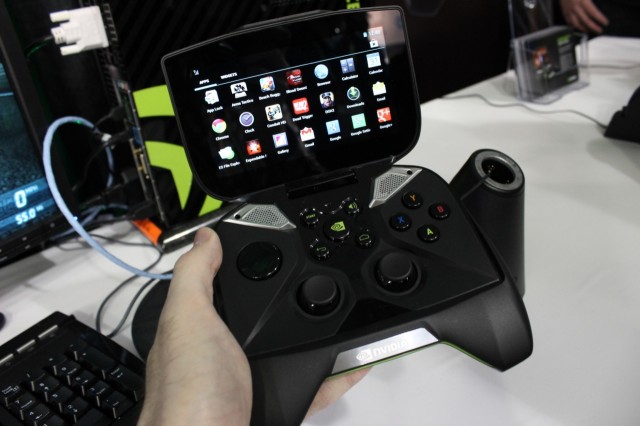
Nvidia's Project Shield has become just-plain-Shield, and it's coming next month.
Nvidia
Nvidia's Project Shield, a portable Android-powered game console, was one of the few true surprises to come out of this year's CES. While Nvidia had a few demo units to show off then and a couple of months later at its GPU Technology Conference, we still didn't have specific information about pricing and availability.
The company answered both of these questions in a new Shield-focused blog post this morning: the tablet-turned-console will begin shipping in June for $349 from a variety of online and brick-and-mortar stores, including Newegg, GameStop, Micro Center and Canada Computers. General pre-orders begin on next Monday, May 20th, but if you've signed up to receive Shield updates from Nvidia you can pre-order the device starting today. If you haven't already registered, those who do so between now and the 20th should still be eligible to buy the device before the unwashed masses have the opportunity.
At $349 the Shield is definitely more expensive than mid-range, pure Android tablets like the $199 Nexus 7, but compares favorably to the $329 iPad mini or the $399 Nexus 10 if the physical controller appeals to you. Given the form factor, however, the more apt comparison might be to other portable game consoles rather than all-touchscreen tablets. Here, the comparison is less flattering—Sony's PlayStation Vita starts at $249.99, while Nintendo's 3DS and 3DS XL start at $169.99 and $199.99, respectively. Android's versatility makes the Shield a bit more intriguing than either of those consoles in many ways, but you'll have to pay more to get that extra feature.
Most of the other facts about the Shield have already been public for some time, but we'll run down the full spec sheet again for your benefit: the Shield will be one of the first devices to include Nvidia's new Tegra 4 SoC, which is a substantial step up from the Tegra 3. It has a 5-inch 720p display, stereo speakers, and includes 2GB of RAM and 16GB of storage. Dual-band 802.11n and Bluetooth 3.0 provide wireless connectivity, while micro USB, microSD, mini HDMI, and a headphone jack round out the physical port selection.
The tablet also comes with what is essentially stock Android 4.2.2 with a couple of Nvidia-centric features tacked on, one being the Tegra Zone software and one being the in-beta software forstreaming games from your desktop. Because they don't have to deal with carriers, Nvidia representatives told me circa GTC that the Shield should get its Android updates without much delay, which if true would be a nice change from the standard operating procedure.

Enlarge / The Shield prototype we played with at GTC had a mushy, unsatisfying directional pad that the final hardware may have tweaked.
Andrew Cunningham
The Shield's signature feature, of course, is the controller that's grafted on to the screen—it brings a very Xbox 360-like gaming experience to a handheld game console, which might appeal to some of you out there. Compared to the demo units Nvidia showed off at CES and its GPU Technology Conference, the Shield tablet in the press shots has been subtly tweaked. The joysticks and buttons look mostly the same (aside from switched positioning for the Start and Mute buttons surrounding the Nvidia logo button), but the directional pad is quite different.
The old directional pad was mushy, and the directional buttons themselves weren't very well-defined. The new pad, at least in the press shots, looks much more concave and the traditional "cross" shape is more distinct, giving us hope that it will feel more precise than the prototype. A good D-pad is the difference between a tablet that's great for old-school games and one that isn't, so we're eager to see if the final hardware plays better than the early versions. We'll be posting our full review of the device as soon as it's available.
No comments:
Post a Comment